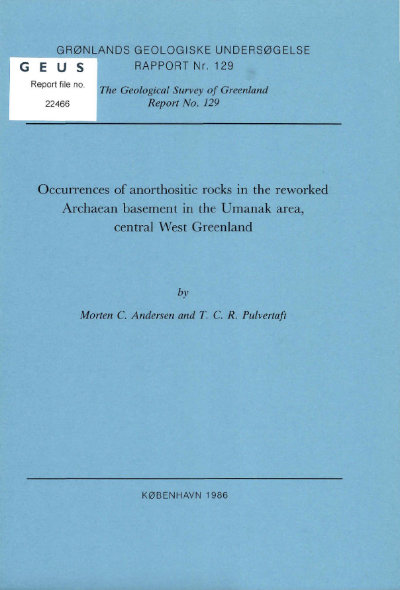Occurrences of anorthositic rocks in the reworked Archaean basement in the Umanak area, central West Greenland
DOI:
https://doi.org/10.34194/rapggu.v129.7933Abstract
The main occurrence of anorthositic rocks in the Umanak area is the Tunulik sheet, a body up to 300 m thick with an areal extent of about 80 km2. The sheet is a composite body, consisting of blocks of crudely foliated anorthosite and leucogabbro 1-3 m in size in a granitic gneiss matrix. The blocks are jumbled together with no systematic distribution of blocks with different colour indices and no preferred orientation of the internal foliation within the blocks. The blocks are composed mainly of plagioclase, with small amounts of hornblende and biotite. The plagioclase shows patchy zoning; the composition is in the range An82-68. The dark minerals tend to be clustered in parallel schlieren. Epidotisation has given many blocks a yellowish colour. Textures are metamorphic. Both quartz- and nepheline-normative compositions are represented in the anorthositic blocks; it is suspected that compositions were modified with respect to Si, and possibly also Na and K, during metamorphism and incorporation in the granitic host. In addition to the Tunulik sheet, there are several small occurrences of anorthositic rocks in the Umanak area. These differ from the Tunulik sheet only in the fact that the anorthositic blocks in the minor occurrences are hosted in granodioritic-tonalitic gneiss no different from the country gneisses in the area, whereas in the Tunulik sheet the matrix gneiss is granitic.
Downloads
Published
Issue
Section
License
This article is distributed under a CC-BY 4.0 licence, permitting free redistribution and reproduction for any purpose, even commercial, provided proper citation of the original work. Author(s) retain copyright over the article contents.


